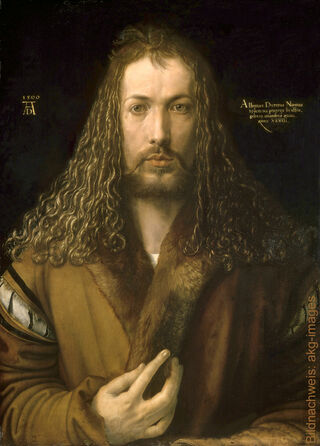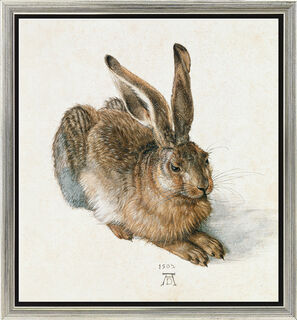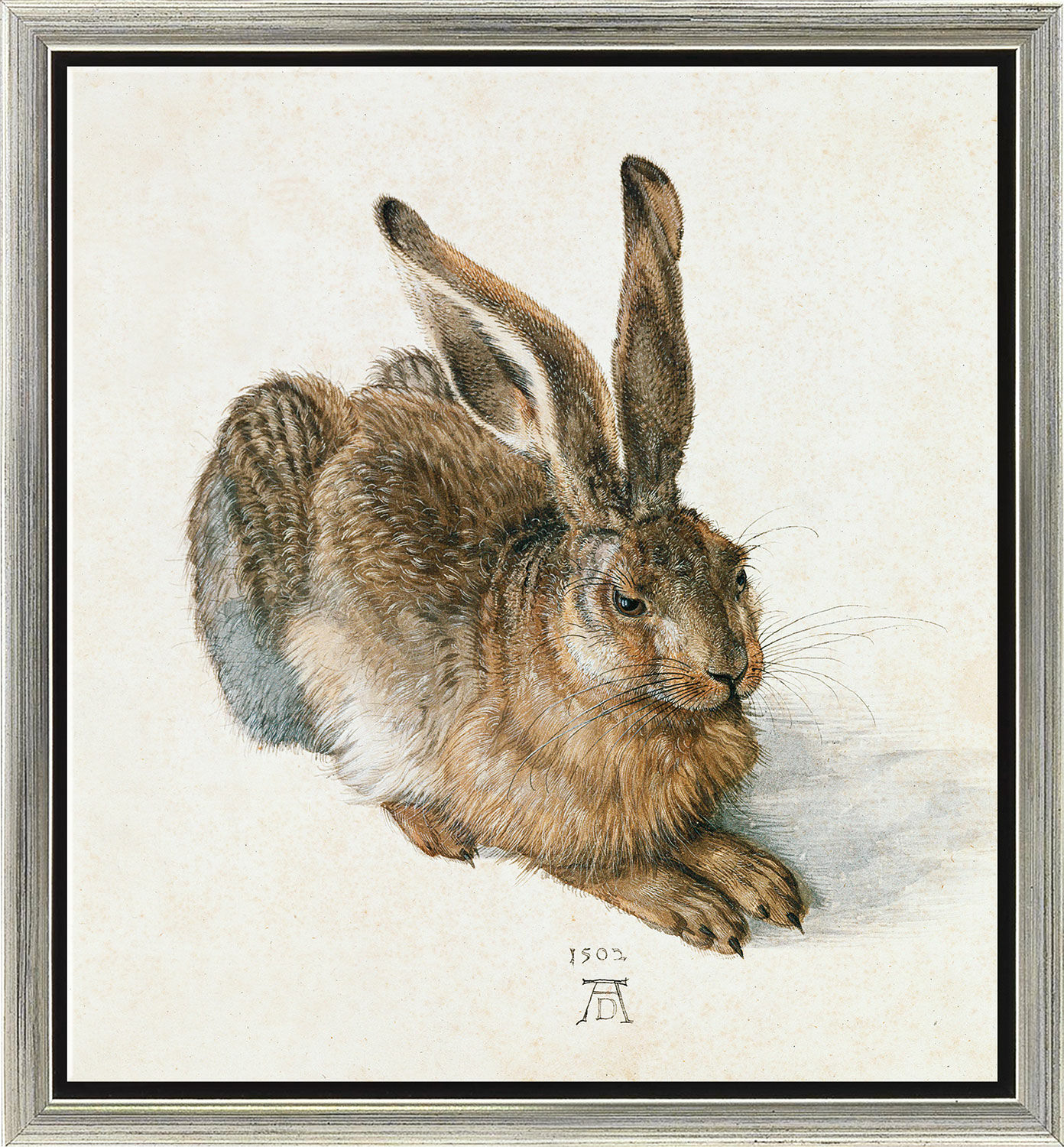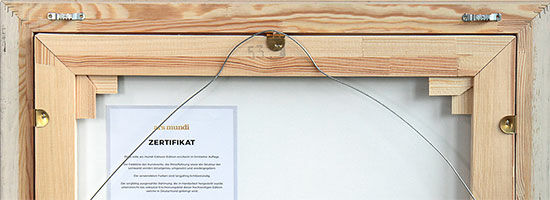Picture "Young Hare" (1502), silver-coloured framed version


Picture "Young Hare" (1502), silver-coloured framed version
Quick info
ars mundi Exclusive Edition | limited, 980 copies | numbered | certificate | reproduction, Giclée print on canvas | on stretcher frame | framed | size approx. 68 x 63 cm (h/w)
Detailed description
Picture "Young Hare" (1502), silver-coloured framed version
Original: Watercolours, heightened with opaque colours, 25.1 x 22.6 cm, 2073 D 49 Vienna, Graphische Sammlung Albertina.
High-quality Fine Art Giclée museum edition directly on artist's cotton canvas and stretched on a stretcher frame. Limited edition of 980 copies. Numbered on the back with certificate. Framed in a silver shadow gap frame. Size framed approx. 68 x 63 cm (h/w). arsmundi Exclusive Edition.
Frame configurator
Customised picture frame

Frame configurator
Customised picture frame







About Albrecht Dürer
1471-1528
German painter, copperplate engraver and woodcut draughtsman. He is one of the most important and versatile artists of the period of transition from the late Middle Ages to the Renaissance in Germany.
At first, he learned goldsmithing but at the age of fifteen, he already started as an apprentice to a painter. Later he followed the German custom of taking Wanderjahre (gap years), and when he returned home he developed the greatest versatility in painting using the techniques known at the time.
His animal drawings, that are produced in such accuracy of observation and execution of drawing, point to the view of nature, undistorted by mythology and superstition, that became so characteristic of the Renaissance. The statement formulated by Galileo more than a century later already applied to Dürer at his time: "Nature is written in that great book whichever is before our eyes but we cannot understand it if we do not first learn the language and grasp the symbols in which it is written."
Graphic or sculpture edition that was initiated by ars mundi and is available only at ars mundi or at distribution partners licensed by ars mundi.
Giclée = derived from the French verb gicler "to squirt, spurt".
The giclée method is a digital printing process. It is a high-resolution, large-format printout on an inkjet printer with special different-coloured dye- or pigment-based inks (usually six to twelve). The colours are fade-proof, i.e. resistant to harmful UV light. They have a high richness of nuance, contrast and saturation.
The giclée process is suitable for art canvases, handmade and watercolour paper as well as for silk.
(Rebirth). The term describing art from around 1350 until the 16th century.
A mindset that developed in Florence in the late 14th century that was retrospectively classified as rebirth of the classical ideals of Greek and Roman antiquity. During the 15th and 16th centuries, the Renaissance spread first over Italy and then all over Western Europe and determined the entire artistic creation. Brilliant artists such as Donatello, Leonardo da Vinci, Michelangelo, Raphael, Dürer, Holbein, Cranach and Fouquet created their immortal works by following the humanistic premises and placing the human being in the centre of all thinking.
Renaissance experienced its heyday in literature through dramatic works and poems of William Shakespeare.
At the end of the 16th century, the Renaissance had to give way to the opulence of baroque, before its ideas experienced a rebirth in the classicism of the 18th century.






